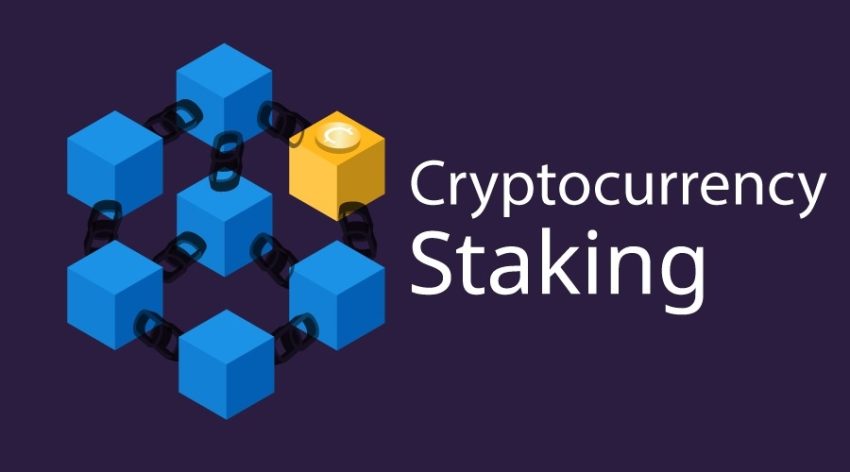Welcome to the ultimate how-to guide for crypto staking, where we will explore the world of staking and how you can leverage this innovative method to earn passive income from your cryptocurrencies. Whether you’re a seasoned crypto enthusiast or just starting your journey, this guide will provide you with valuable insights on how to get started with staking and maximize your returns.
What is Staking Cryptocurrencies?
Staking cryptocurrencies refers to the process of holding and supporting a particular digital currency within a compatible wallet or staking platform. By staking, individuals contribute to the operations and security of a blockchain network and, in return, earn rewards in the form of additional cryptocurrency tokens.
Unlike traditional mining, which involves solving complex mathematical problems to create new blocks and secure the network, staking relies on the Proof of Stake (PoS) or Delegated Proof of Stake (DPoS) consensus algorithms. These algorithms select participants to validate transactions and create new blocks based on the number of tokens they hold and are willing to stake or temporarily lock up.
Benefits of Staking Cryptocurrencies
Staking offers several benefits for cryptocurrency holders. Let’s explore some of the key advantages:
- Passive Income: One of the primary benefits of staking is the opportunity to earn a passive income. By staking their coins, individuals can receive staking rewards in the form of additional coins or tokens. These rewards are distributed to stakers as an incentive for validating transactions and maintaining the network’s security. Staking allows individuals to put their idle coins to work and generate a steady stream of income over time.
- Network Participation: Staking provides an opportunity for active participation in the governance and decision-making of a blockchain network. Stakers often have voting rights and can participate in important network proposals, such as protocol upgrades or changes. This involvement gives stakers a voice in shaping the future direction of the network and ensures a decentralized and inclusive ecosystem.
- Security and Network Stability: By staking their coins, individuals contribute to the security and stability of the blockchain network. Validators play a crucial role in confirming transactions and maintaining the integrity of the network. The more coins staked, the stronger the network becomes, as it becomes increasingly difficult for malicious actors to disrupt or compromise the system. Staking incentivizes individuals to act in the network’s best interest and promotes a robust and secure ecosystem.
- Lower Energy Consumption: Unlike the energy-intensive proof-of-work (PoW) consensus mechanism used by cryptocurrencies like Bitcoin, staking operates on the more energy-efficient proof-of-stake (PoS) mechanism. PoS consumes significantly less energy as it doesn’t require extensive computational power for mining. By staking coins and participating in PoS, individuals contribute to a greener and more sustainable crypto ecosystem.
How Does Crypto Staking Work?
- Proof-of-Stake (PoS) Consensus: Crypto staking operates on a proof-of-stake consensus mechanism. In PoS, validators are chosen to create new blocks and validate transactions based on the number of coins they hold and are willing to lock in a staking wallet. The more coins a user stakes, the higher their chances of being selected as a validator.
- Locking and Securing Coins: When users stake their coins, they lock them in a staking wallet, temporarily making them inaccessible for trading or transferring. By locking their coins, users demonstrate their commitment to the network and become eligible for participation in the block validation process.
- Block Validation and Rewards: Validators are responsible for confirming transactions, adding them to the blockchain, and maintaining the network’s security. In return for their efforts, validators receive staking rewards, which are additional coins or tokens generated by the network. These rewards serve as an incentive to encourage validators to uphold the network’s stability and integrity.
- Distribution and Mechanism: The specific distribution of staking rewards varies depending on the blockchain network and cryptocurrency being staked. Some networks distribute rewards proportionally based on the number of coins staked, while others utilize different algorithms or factors to determine the distribution. It’s important for stakers to understand the specific rules and mechanisms of the network they are staking on.
Getting Started with Crypto Staking
Researching and Selecting a Staking Platform
Once you have your staking wallet set up, it’s time to choose a staking platform. There are numerous platforms available, each with its own features and supported cryptocurrencies. Consider factors such as platform reputation, user reviews, fees, and ease of use when selecting a platform.
Creating an Account and Setting Up Security Measures
After selecting a staking platform, create an account and follow the platform’s security guidelines to protect your assets. Enable two-factor authentication, use strong passwords, and consider additional security measures like hardware wallets for enhanced protection.
Choosing the Cryptocurrency to Stake
Evaluate different cryptocurrencies based on their staking rewards, potential for growth, and overall market sentiment. Consider diversifying your staked assets to minimize risk and maximize potential returns.
Different Methods of Staking Cryptocurrencies
When it comes to staking cryptocurrencies, there are different methods available, including wallet staking, exchange staking, and staking pools.
Wallet Staking
Wallet staking involves using a compatible cryptocurrency wallet that supports staking. You transfer your tokens to the wallet and stake them, allowing you to participate in the network and earn rewards. This method gives you more control over your funds and ensures a higher level of security as you hold your private keys.
Exchange Staking
Some cryptocurrency exchanges also offer staking services to their users. Instead of transferring your tokens to a separate wallet, you can stake them directly on the exchange platform. This method provides convenience but may come with certain risks as you entrust your assets to a third-party service.
Staking Pools
Staking pools allow multiple participants to combine their staking resources to increase their chances of earning rewards. These pools operate similarly to mining pools, where participants contribute their tokens to a common pool and share the rewards based on their contribution. Staking pools can be an attractive option for those with smaller amounts of tokens who still want to participate in staking.
Staking Strategies
Long-Term vs. Short-Term Staking
Decide whether you want to stake your coins for the long term or opt for shorter staking periods. Long-term staking offers the advantage of compounded rewards, while short-term staking allows you to adapt to changing market conditions.
Diversifying Staked Assets
Consider staking different cryptocurrencies to diversify your staked assets. This can help spread the risk and ensure you’re not overly exposed to a single coin or blockchain network.
Reinvesting Rewards
To maximize your staking returns, consider reinvesting the rewards you earn. By compounding your earnings, you can accelerate the growth of your staked assets over time.
Risks and Considerations of Staking Cryptocurrencies

- Market Volatility: Cryptocurrency markets are known for their volatility, and staking involves exposure to market risks. The value of the staked cryptocurrency can fluctuate significantly, affecting the overall value of the staked assets. It’s crucial to understand and be prepared for potential price fluctuations and the impact they can have on your staking rewards and the value of your staked coins.
- Security Risks: As with any involvement in the crypto space, security is paramount. Staking requires individuals to set up and manage a staking wallet and potentially interact with staking platforms. It’s important to follow best practices for securing your staking wallet and platform account. Be cautious of phishing attempts, use strong security measures such as two-factor authentication, and keep your private keys and recovery phrases secure.
- Network Risks: Each blockchain network may have its own set of risks and vulnerabilities. Before staking, it’s crucial to research and understand the specific blockchain’s consensus mechanism, security protocols, and any known issues or vulnerabilities. Stay informed about updates, patches, and network upgrades to ensure you are aware of potential risks and take appropriate precautions.
- Regulatory and Legal Considerations: The regulatory landscape for cryptocurrencies and staking varies across jurisdictions. It’s important to be aware of the legal and tax implications of staking in your specific location. Stay informed about any regulatory developments or requirements that may impact your staking activities, and consult with a legal or tax professional if needed.
- Terms and Conditions: When staking on a specific platform or network, carefully read and understand the terms and conditions. Pay attention to details such as lock-up periods, unstaking periods, fees associated with staking and rewards distribution, and any potential limitations or restrictions that may apply. Being aware of these terms will help you make informed decisions and avoid any surprises or misunderstandings.
Best Practices for Successful Crypto Staking
Regularly Monitoring Staked Assets
Keep track of your staked assets by monitoring your staking wallet and platform regularly. Stay informed about updates, changes, and potential risks that may affect your staking activities.
Staying Informed about Updates and Changes
Stay updated with news, announcements, and developments related to the cryptocurrencies you stake. This will help you make informed decisions and adapt your staking strategy accordingly.
Managing Risk and Setting Realistic Expectations
Staking involves risks, and it’s essential to manage them effectively. Set realistic expectations, diversify your staked assets, and only stake what you can afford to lock up for the staking duration.
Conclusion
Crypto staking offers an exciting opportunity for individuals to earn passive income and actively participate in the blockchain ecosystem. By understanding the fundamentals, choosing the right cryptocurrencies, and implementing effective staking strategies, you can unlock the full potential of crypto staking and enhance your investment portfolio.
FAQs
What is the minimum amount required for staking?
The minimum staking amount varies depending on the cryptocurrency and staking platform. It’s advisable to check the specific requirements of each platform before getting started.
Can I unstake my coins at any time?
Unstaking periods vary among cryptocurrencies and platforms. Some may have lock-up periods during which your coins are locked and cannot be unstaked. Make sure to understand the unstaking process and any associated restrictions.
Are staking rewards taxable?
Tax regulations regarding staking rewards differ across jurisdictions. Consult with a tax professional to understand the tax implications of staking in your specific location.
What happens if the price of the staked cryptocurrency drops?
Market fluctuations can affect the value of your staked coins. However, the impact on your staking rewards depends on the specific staking mechanism and the underlying blockchain protocol.
Is staking more profitable than traditional investment methods?
Staking can provide attractive returns, but profitability depends on various factors, including market conditions and the performance of staked cryptocurrencies. It’s important to conduct thorough research and consider your individual investment goals and risk tolerance.
I have over 10 years of experience in the Crypto industry and I have written dozens of articles on the subject. I am one of the leading experts in Cryptocurrency and my work has been featured in major publications such as Forbes, CoinDesk, and Bitcoin Magazine. I am also a regular contributor to CoinTelegraph and have been interviewed by numerous media outlets including CNBC, Bloomberg, and The Wall Street Journal. In addition to my writing, I am also an active investor in the space and have made successful investments in a number of projects including Ethereum, Bitcoin, and Litecoin.

